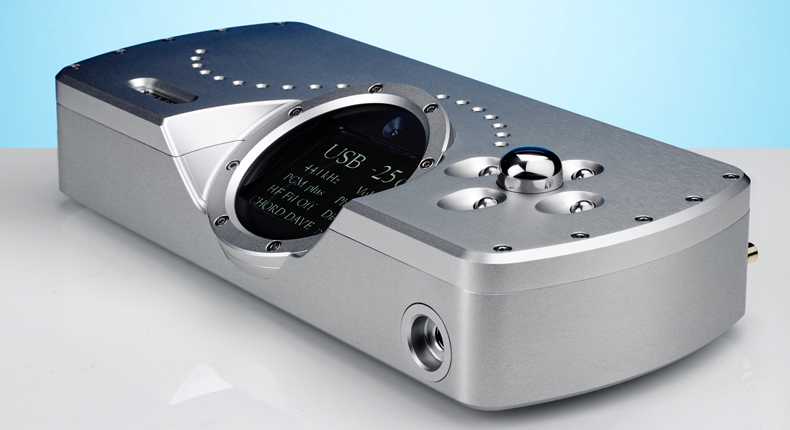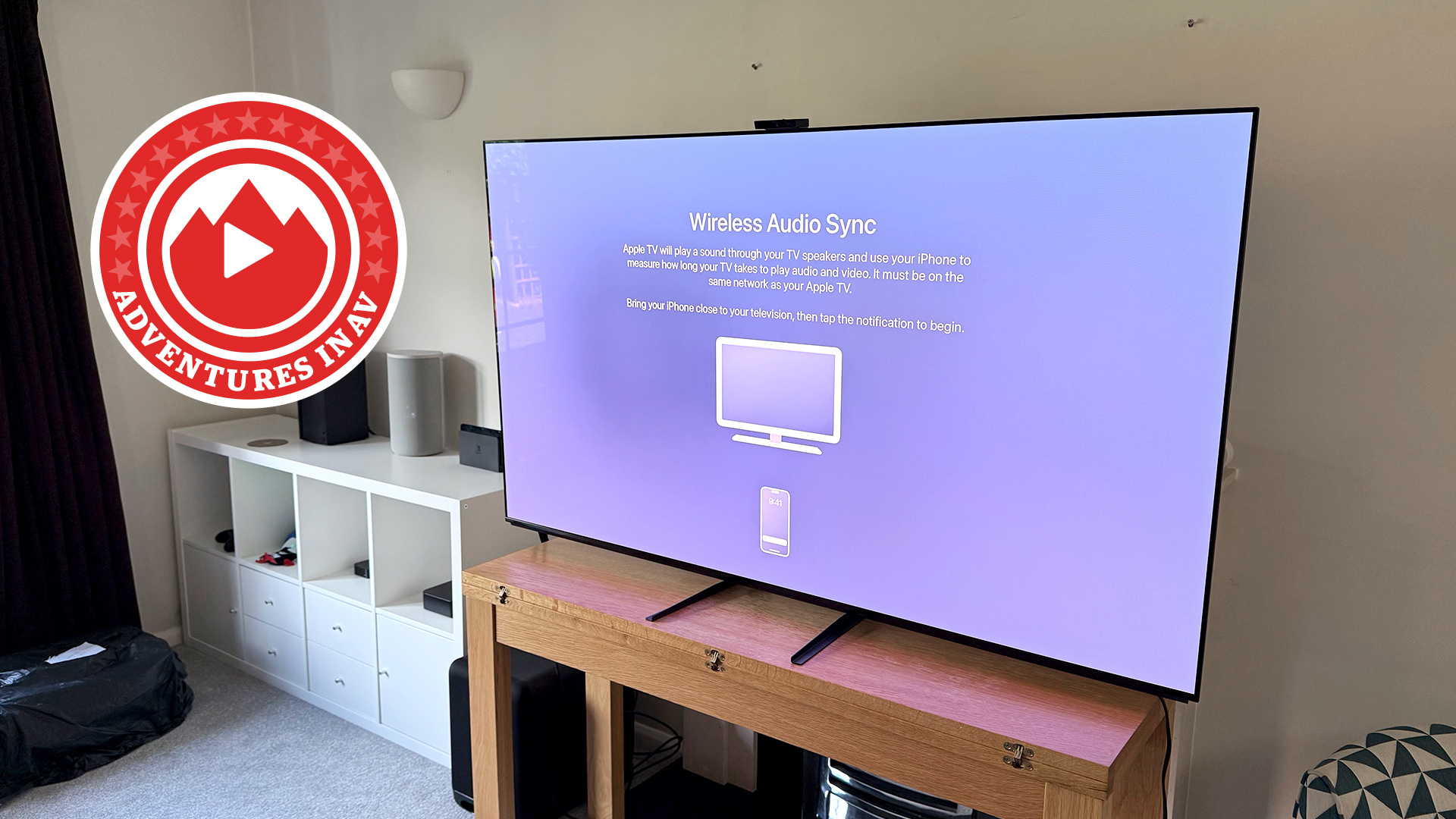What Hi-Fi? Verdict
If you’re looking for the best DAC money can buy, the DAVE is a superb place to start. We haven’t heard anything that sounds so natural or insightful
Pros
- +
Class-leading sound quality
- +
Excellent dynamics and rhythmic ability
- +
Impressive feature list
- +
Fine build
- +
Distinctive appearance
Cons
- -
If the price isn’t an issue, nothing
Why you can trust What Hi-Fi?
Chord Electronics has taken an eccentric route with its product names in recent years. We’ve had Hugo, Mojo and now the DAVE. The name is an acronym that stands for ‘Digital to Analogue Veritas in Extremis’. Yes, really.
Chord has something of a Midas touch when it comes to digital-to-analogue converters. It has dominated our Awards in recent years, and has set the standard with its innovative portable models.
But the DAVE isn’t about portability. It’s about maximising performance, and it does this brilliantly.
MORE: Chord Mojo review
Specs
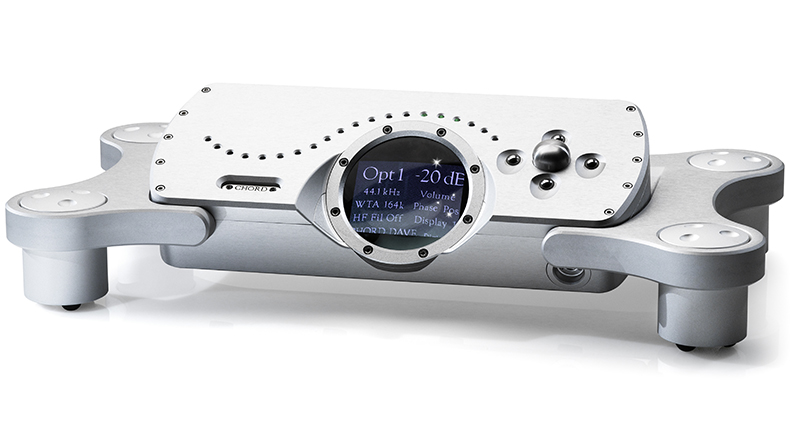
Most rivals tend to buy in dedicated DAC chips from OEM manufacturers such as Wolfson or Burr Brown, and build their digital-to-analogue sections around these. There’s nothing wrong with such an approach – we’ve heard some terrific results – but it does mean that the designer has little leeway to optimise performance beyond that achieved by a rival using the same chip.
Chord has long done things differently. At the heart of the DAVE, and every current Chord DAC for that matter, is a FPGA (Field Programmable Gate Array) loaded with highly-developed proprietary software.
It’s the use of this software that marks Chord products as something special. This digital engine does everything from the digital-to-analogue conversion to filtering, even processing a DSD signal when required.
The DAVE, as expected at its elevated price, uses a high-end FPGA in the form of the LX 75 version of Xilinx’s Spartan-6 – a chip that has around ten times the processing power of that used in the company’s previous flagship, the QBD76.
This is one case where greater processing power really means better performance (all other things being equal, of course).
Build

The build quality is excellent. The DAC’s heavily sculptured aluminium case feels immensely rigid and is nicely finished, though we wish Chord would take a little more care in making sure the top panel (more of a slab, really) lines up exactly with the base all the way around.
At certain points it’s a fraction of a millimetre out. It’s a small point, but at this price we expect perfection.
We love how adventurous Chord continues to be with the visual design of its products. Sure, the DAVE’s extrovert appearance may not be to all tastes but this DAC is a talking point, something a conventional black or silver box will never be.
The display is better than Chord’s previous efforts too. It’s relatively large and the type is clear, but we find it a little cluttered. There are a number of display options that add a bit of colour, but we tend to prefer the basic option.
Features

The list of back panel connections is extensive. It’s a shame that Chord hasn’t seen fit to label them in any way or form. We’re left relying on the manual, which isn’t a disaster but makes wiring things up a little less easy than it should be.
There’s the usual trio of digital inputs – USB (type B), co-ax and optical. The DAVE loves big numbers, with the single USB accepting PCM signals with sampling rates up to an astonishing (though not necessarily useful) 768kHz.
The Chord DAVE handles DSD files up to staggering DSD 512 too, should you need.
The presence of four coax and two optical inputs don’t let the side down either, with upper sampling rate limits of 384kHz and 192kHz respectively.
The DAVE also has the rare AES/EBU balanced digital input – limited to 96kHz signals – though we can’t imagine many using this in a domestic situation.
MORE: Best DACs 2016

Look carefully and you’ll find a quartet of BNC connectors that Chord calls DX inputs. These are for as yet unannounced Chord source products. We’re intrigued.
The outputs are far more conventional, with single-ended and balanced analogue options. You should note that both deliver a far higher level of signal than is normal, so the DAVE will sound much louder than any rival during comparisons.
Its single-ended connection delivers a 3V signal with the balanced output doubling that. Most rivals will measure around 2V and 4V respectively.
Unlike previous range-topping Chord DACs this one has a headphone output, and switches between line and headphone when a 6.3mm jack is plugged in.
The DAVE is pretty easy to set up, though once again, the lack of labelling slows things down until we’re fully familiar with the operational logic of all the controls. The large (slippery) dome on the top panel is the volume control.
It can be switched in or out of the circuit depending on your set-up. The buttons placed around it navigate around the menu, as well as change inputs. You can use the supplied remote to do these things too.
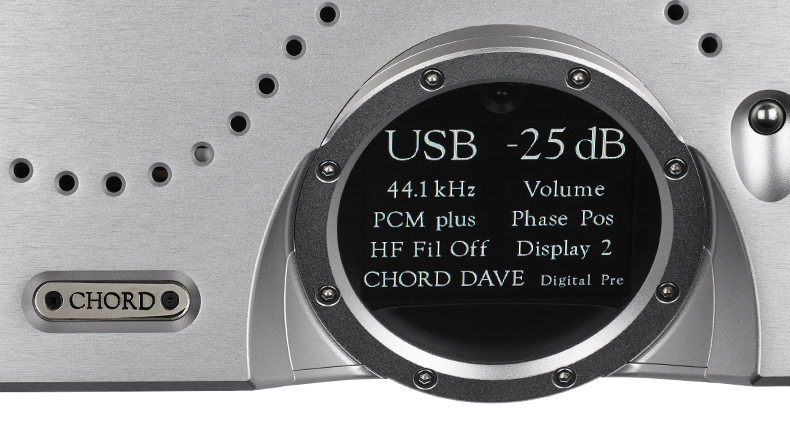
DAVE can be configured to prioritise PCM or DSD signals. It’s the first time we’ve come across something like this, and it optimises the processing for the type of signal used. It really works, with the best results happening – unsurprisingly – when this choice is correctly set.
There’s a phase switch too. In our system the unit sounded best when this was set to negative phase – everything just clicked into focus, sonically. It’s system related though, so you may find the opposite to be true.
Other options include a high frequency filter to reduce noise – we didn’t notice much difference here – and, if you’re using headphones, three levels of Chord’s Crossfeed system.
Crossfeed blends information between the left and right channels to move the presentation away from the typical ‘in your head’ balance of headphone listening to something closer to that of a traditional stereo speaker set-up.
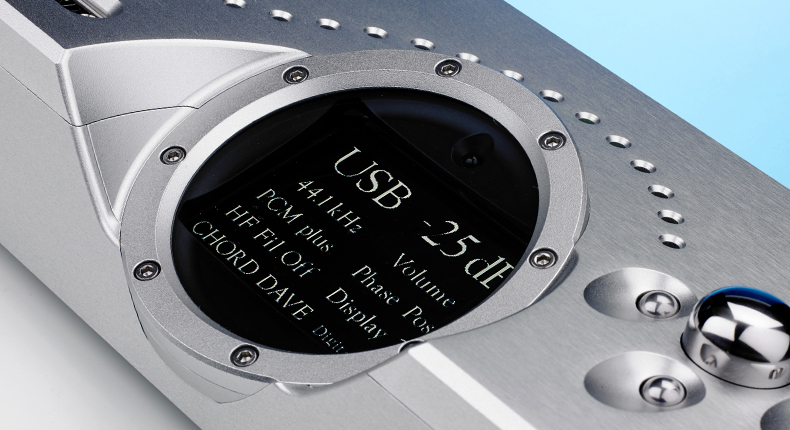
Usually, we don’t like such processing modes, but here, just like on the Hugo, we find it works really well. Crossfeed gives a convincing soundstage in front of us, without diluting any of the good aspects of the sound.
Any DAC of this quality needs a similarly talented system to shine. We use a range of sources including our reference Naim NDS/555PS streamer, Cyrus’s Signature CD Xt transport and a Macbook loaded with Pure Music media playing software.
Gamut’s D3i/D200i combination serves as amplification, feeding our trusty ATC SCM50s. Chord Company provided all the digital and analogue cables. The cable company is no connection to the DAVE’s manufacturer, despite the similarity in name.
MORE: Chord Hugo review
Sound
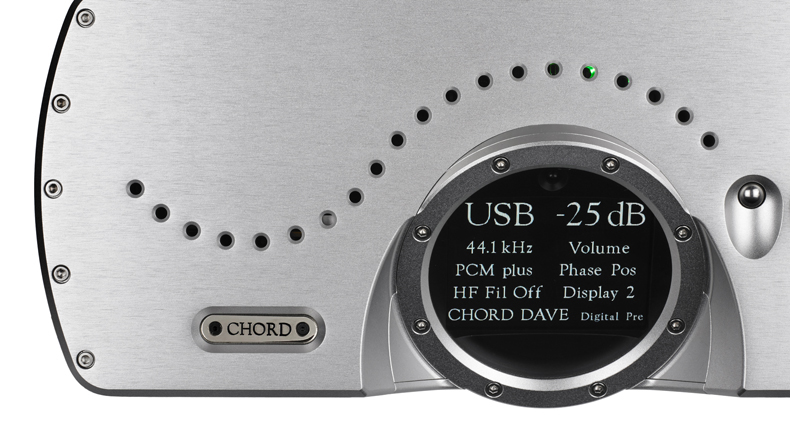
It doesn’t take more than a few seconds of listening to realise that the DAVE is something special. It just sounds so right from the beginning that it genuinely takes effort to even try to deconstruct its performance. When we did, we found a formidable array of talents with no discernable weaknesses.
Orff’s Carmina Burana is one of the most demanding pieces of music we know. It has savage dynamics coupled to complex instrumentation and varies from outright frenzy to angelic harmonies in the space of just a few seconds.
The DAVE takes it all in stride. This DAC renders a convincing acoustic – a believable space populated by the choir and instruments.
Sound staging is excellent. It is precise, layered and neatly arranged. More than that it’s stable, even when the music turns demanding. The tonal balance is similarly impressive being even-handed and utterly convincing.
No part of the frequency range gets undue preference and there’s a lovely balance between attack and refinement.
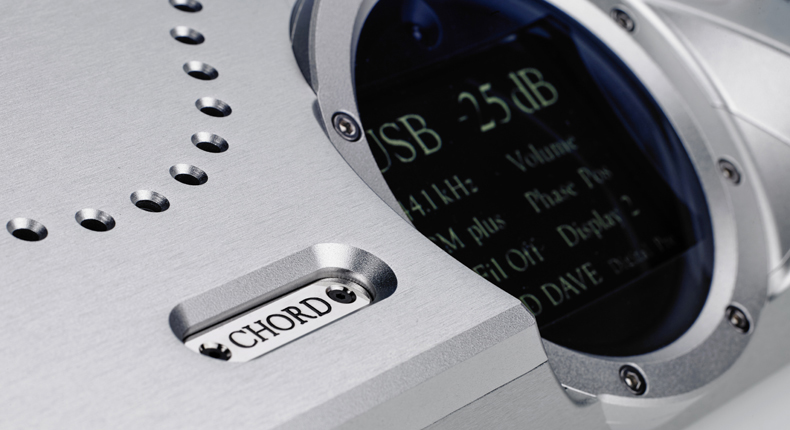
It’s the DAC’s dynamic ability that impresses us most with this piece. Not only does this DAC thump out crescendos with conviction, but it also goes from loud to quiet and back again with a grace and fluidity we have rarely heard from a DAC before.
It paints music with class leading naturalness that makes most rivals sound mechanical and restrained in comparison.
Switching to Dave Brubeck’s Take Five shows-off the Chord’s talented way with high frequencies. Cymbals shimmer, and are delivered with fully realised harmonics. There’s plenty of power when they’re hit and wonderful insight into their decay.
We notice the excellent sound staging with this recording too, though it’s the DAVE’s excellent rhythmic ability that really stands out. It is truly terrific in this respect, delivering the timing relationships between the individual instruments brilliantly.
MORE: DACs: everything you need to know
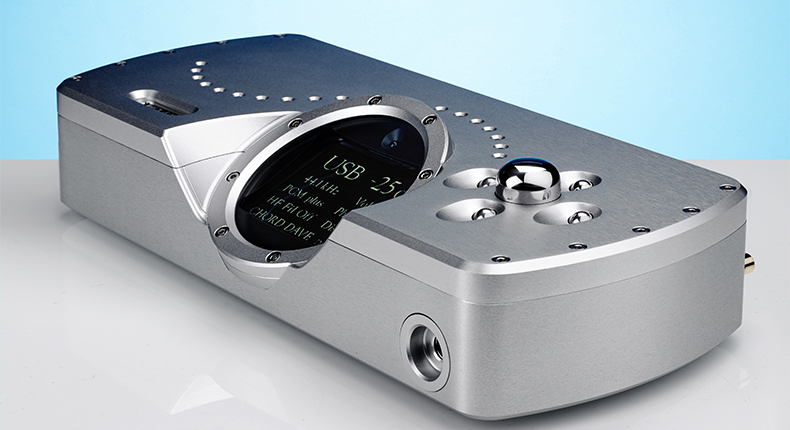
These qualities remain readily apparent on Kendrick Lemar’s The Blacker the Berry, where the rhythm track comes through with a seemingly unstoppable momentum. There’s everything we would want here – punch, attack and plenty of insight.
The DAVE’s sound is superbly refined, but never uses that as an excuse to smooth things off to the extent where the music’s innate sparkle is reduced. It’s just transparent to the source. We can ask no more than that.
That headphone output is similarly pleasing. This output is designed to drive headphones with impedances between 8 and 800 ohms – a range that covers most on the market. We tried both Beyerdynamic T1 Gen 2s as well as a pair of Grado PS500s to great effect. The results remain as convincing as through the line stages.
The DAVE even makes a decent digital preamp though, as with most such products, a dedicated high quality preamp will work better still. Let’s not forget a suitably talented preamp is likely to cost a similar amount to the DAVE itself.
Verdict
We’re truly smitten with the DAVE. It’s not perfect, though. Some of the ergonomic decisions are pretty odd, and that stunning appearance won’t be to everyone’s tastes.
But give it high quality recordings while partnering it with a suitably talented system and we think you’ll be amazed with just how good your music sounds.
Eight grand is quite some price tag, but then the DAVE is quite some product.
See all our Chord reviews
What Hi-Fi?, founded in 1976, is the world's leading independent guide to buying and owning hi-fi and home entertainment products. Our comprehensive tests help you buy the very best for your money, with our advice sections giving you step-by-step information on how to get even more from your music and movies. Everything is tested by our dedicated team of in-house reviewers in our custom-built test rooms in London, Reading and Bath. Our coveted five-star rating and Awards are recognised all over the world as the ultimate seal of approval, so you can buy with absolute confidence.
